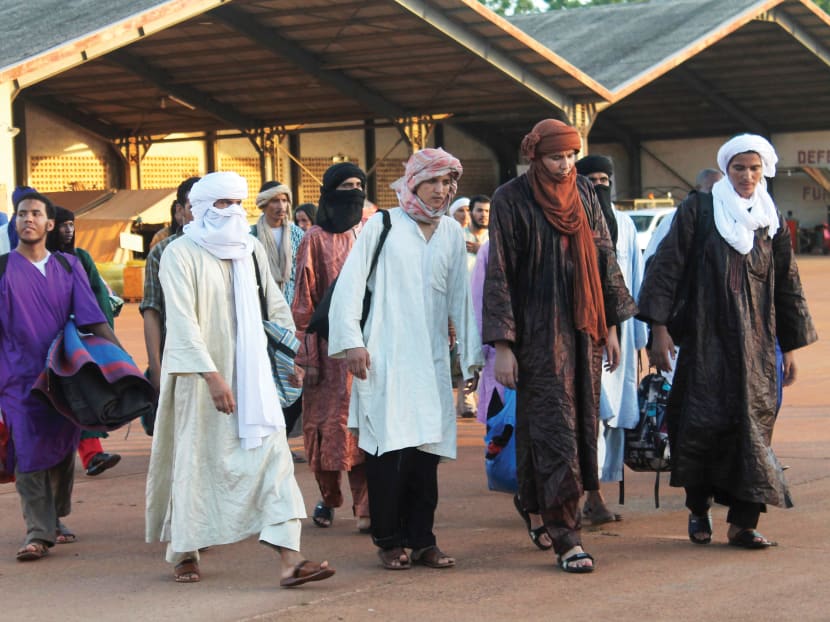Road map to secure peace and end decades of uprisings
ALGIERS — The vast deserts and mountains of northern Mali fell under the control of ethnic Tuareg separatists and then Al Qaeda-linked Islamic extremists after a military coup in 2012.

Prisoners, released by the Mali government before peace talks begin, being transported to the north of the country, in Bamako on July 15. Photo: REUTERS
ALGIERS — The vast deserts and mountains of northern Mali fell under the control of ethnic Tuareg separatists and then Al Qaeda-linked Islamic extremists after a military coup in 2012.
A French-led intervention last year dispersed the extremists, but the Tuaregs still pose a serious threat in the north, as do a string of other fractious Islamist groups. The Tuaregs have pushed back against the authority of the Bamako-based government. France is now giving its troops a new and larger antiterrorist mission across the region.
Meanwhile, the threat from Islamic militants has not disappeared, with the group taking advantage of the latest rebellion led by the Tuaregs.
Mali’s government and Tuareg-led rebels on Thursday signed an agreement for a road map towards securing a broader peace deal to end decades of uprisings in the north. The region has risen up four times in the past 50 years, with various groups fighting for independence or self-rule.
The road map calls for negotiations between Aug 17 and Sept 11 to work out “questions of substance” before a second round of talks in October to discuss areas such as security, reconciliation and humanitarian issues. A final peace agreement will be signed in Mali, but Thursday’s accord does not give a date for this last step.
Malian President Ibrahim Boubacar Keita was elected last year partly for his reputation for taking a firm stand against previous uprisings. He is under pressure from the more densely populated south not to give in to rebel demands.
However, a senior French official said it seemed unlikely that fighters in Mali had the kind of weaponry that could shoot down a jetliner at cruising altitude.
While Al Qaeda’s North Africa branch is believed to have an SA-7 surface-to-air missile, most airliners would normally fly out of range of these shoulder-fired weapons. They can only hit targets flying up to roughly 3,700m to 4,600m. AGENCIES






